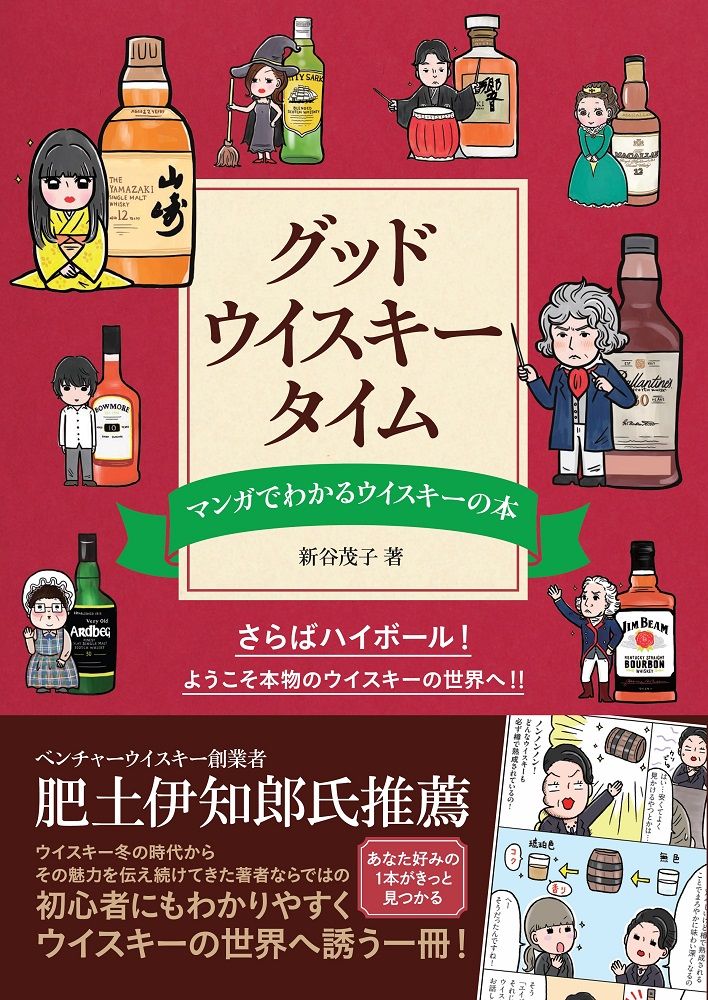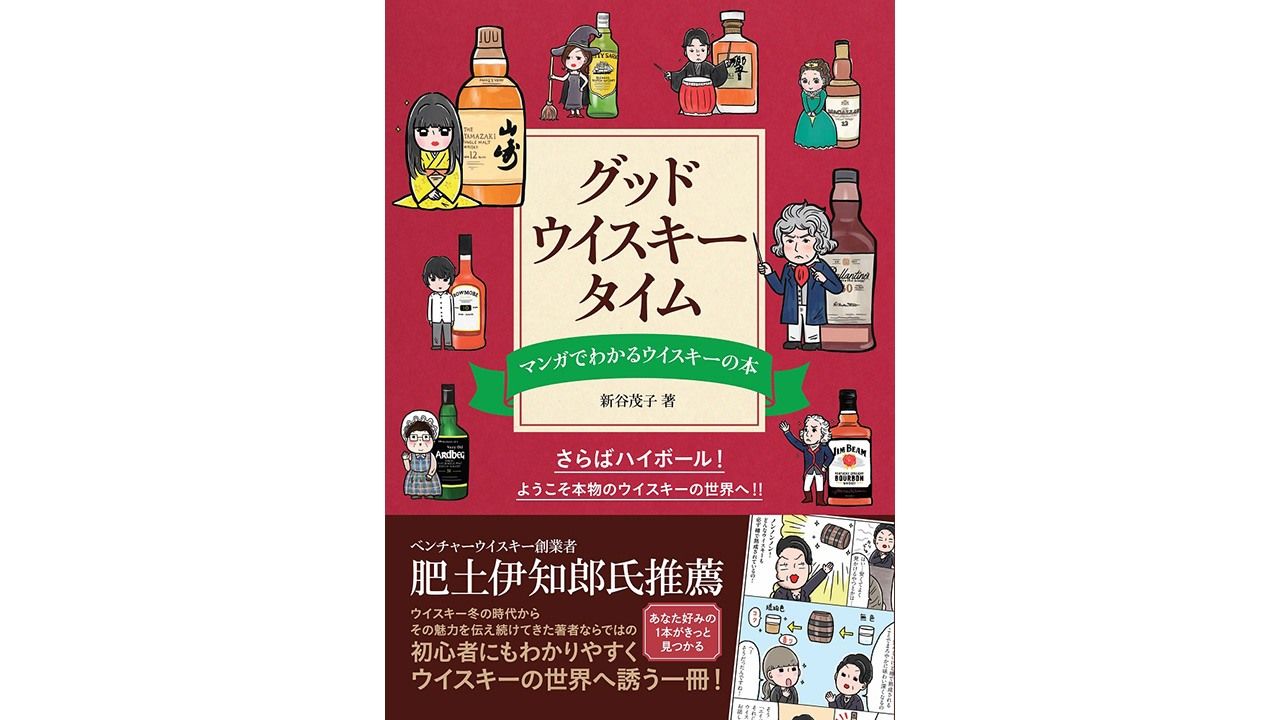
A Century of Japanese Whisky: A Delightfully Detailed Book on the Drink in Japan
Books Culture- English
- 日本語
- 简体字
- 繁體字
- Français
- Español
- العربية
- Русский
A Former Takarazuka Star Branches Out
Shintani Shigeko is a leading star of the Takarazuka Revue who performed female roles as Sawa Kaori. After leaving the revue she also worked as a stage actress. In December 1985 she opened Bar Sawa in Nakameguro, Tokyo, which she still runs today. She is also a whisky educator, hosting regular seminars with well-known distillers and whisky experts she invites. And now she has added author to her resume with Guddo uisukī taimu: Manga de wakaru uisukī no hon (Good Whisky Time: A Manga Guide to the World of Whisky).
She describes her aims in producing this book. “I wrote it for people who aren’t very familiar with the alcoholic beverage. Because I wanted to make a book for women like me, especially young people and those drinking whisky for the first time, I included many illustrations and some pages of manga.”
Although Shintani’s book is written in a chatty style, it’s not just a casual introduction. It gives an overview of the dramatic history and major production regions of the world’s whiskies, along with plenty of specialist knowledge. The author has made many visits to Japanese and overseas distilleries, including many in whisky’s place of origin, Scotland.
Japan as One of the “Big Five”
Scotland has Scotch, Ireland has Irish, America has Bourbon, Canada has Canadian, and now Japan has its own take on whisky. The world has entered an era of the “Big Five Whiskies.”
But of the five, Japanese whisky’s history is the shortest. It was in 1923 that Suntory’s founder, Torii Shinjirō, began building the Yamazaki distillery at the foot of Tennōzan, a peak southwest of Kyoto in Osaka Prefecture. That year is considered to mark the beginning of Japanese whisky.
It was also the year Taketsuru Masataka returned from study in Scotland, joined Kotobukiya (Suntory’s predecessor company), and helped create the Yamazaki distillery. Taketsuru would go on to found Nikka Whisky, serving as its first master blender. These two men who successfully launched domestic production are known as the “fathers of Japanese whisky.”
The author explains how Japanese whisky’s roots are in the Scottish drink. But until recently, “Japanese whisky” has only been vaguely defined. She points out that the ingredients and distillation methods of Japanese whisky were only properly defined in 2021.
In April of that year, the Japan Spirits and Liqueurs Makers Association set voluntary standards for “Japanese Whisky” and began enforcing them. Some main requirements are that “malt must be used as the base ingredient and the water must be sourced in Japan,” “the whisky must be distilled at distilleries in Japan,” “the whisky must be aged in wooden casks of 700 liters or less for at least three years in Japan,” and “the whisky must be bottled in Japan.”
A Lineage of Master Blenders
The history of Japanese whisky began in the Taisho era (1912–26) with various twists and turns since, including the recent shortage of aged stock. Domestic consumption peaked at about 380,000 kiloliters in 1983, then fell and stayed low for a while. But at an international whisky competition in 2001, Nikka’s Single Cask Yoichi 10-year achieved first place overall, and Suntory’s Hibiki 21-year second place.
At the start of the twenty-first century, Japanese brands were frequently honored with the whisky world’s top prizes. That Japan has achieved the status of a “big five” whisky nation is due in large part to blenders. These whisky artisans sort through the aromas of various unblended whiskies, mixing them to produce blends with particular tastes and aromas. The book also lists some Japanese blenders.
One is Torii Shingo, representative director and vice chairman of the board of Suntory Holdings and the company’s third-generation master blender. The master blender bears ultimate and heavy responsibility concerning taste, aroma, quality, and tradition. Torii, who turned 70 in January, is the grandson of Torii Shinjirō, Suntory’s first master blender.
He refined his natural palate and nose through study in the United States and visits to Scotland, where he met with many distillers. In September 2012, I shared food and drink with him in Osaka. It was at a bar in Kitashinchi where Torii tasted his own company’s whisky from a tall glass and assessed its aroma.
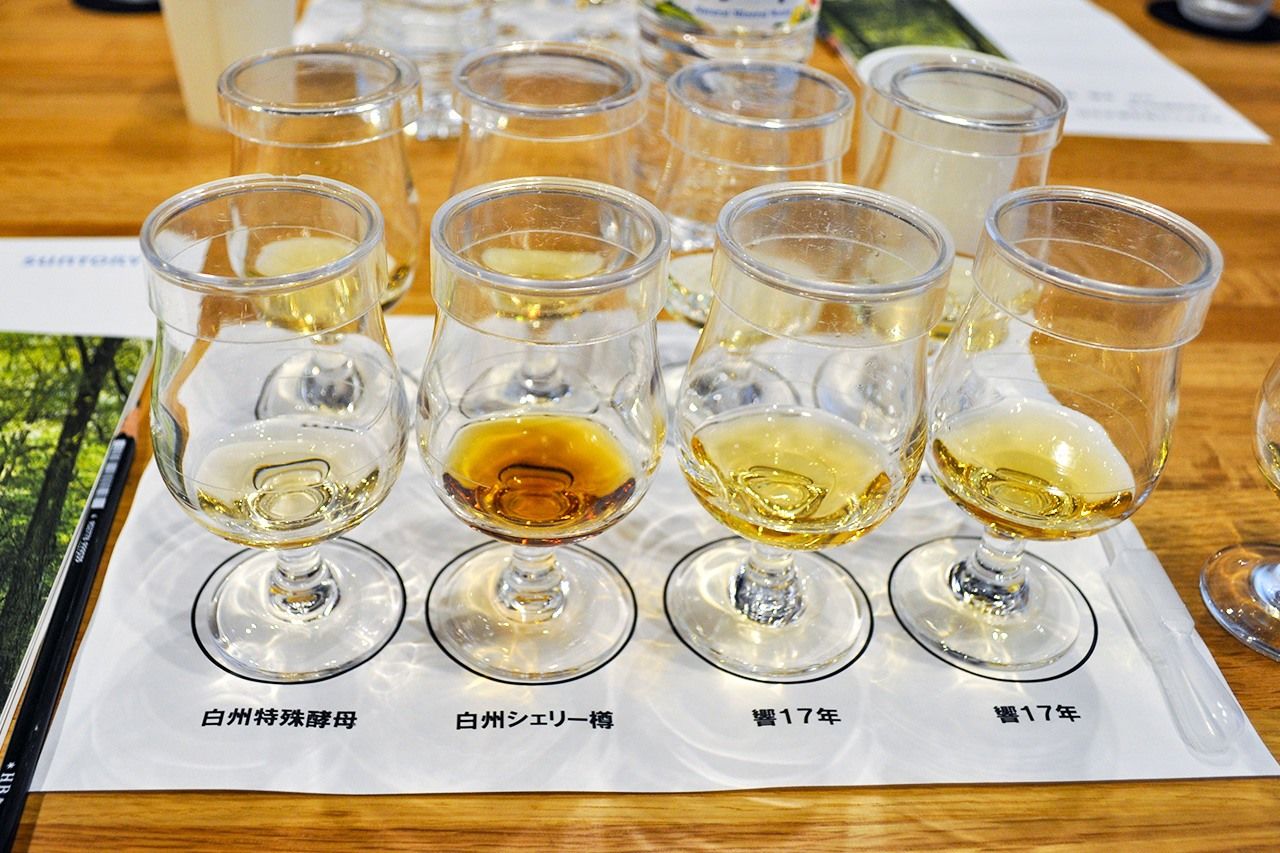
A whisky tasting seminar at the Suntory Hakushū Distillery in Hokuto, Yamanashi Prefecture, on September 5, 2014. (© Izumi Nobumichi)
Suntory’s chief blender, Fukuyo Shinji, also appears in the book. When I visited Suntory’s Hakushū Distillery in the city of Hokuto, Yamanashi Prefecture, in September 2014, Fukuyo spoke at a tasting seminar. “From Sunday night to Friday daytime, I don’t eat anything smelly like garlic. I have a regular routine, I get up early, and I avoid crowds,” he said. I was impressed by his self-discipline.
A Pioneering Craft Distillery in Akashi
Major brands like Suntory, Nikka, and Kirin aren’t the only ones offering Japanese whisky. In recent years, whiskies from small-scale and community-based craft distilleries across Japan have also won international awards with offerings hotly coveted by whisky fans.
It seems that new Japanese craft distilleries are being created every month. According to the book, “As of 2022, the number is more than 70, including those that are planned.” The book also touches on the author’s friendship with Akuto Ichirō, the founder and president of Venture Whisky, based in Chichibu, Saitama Prefecture, and known for its Ichirō’s Malt.
Although the book doesn’t cover this, Eigashima Shuzō in Akashi, Hyōgo Prefecture, is actually a pioneering craft distillery. Founded in 1679 and incorporated in 1888 as a sake manufacturer, it obtained a license to produce whisky in 1919, before construction of the Yamazaki distillery.
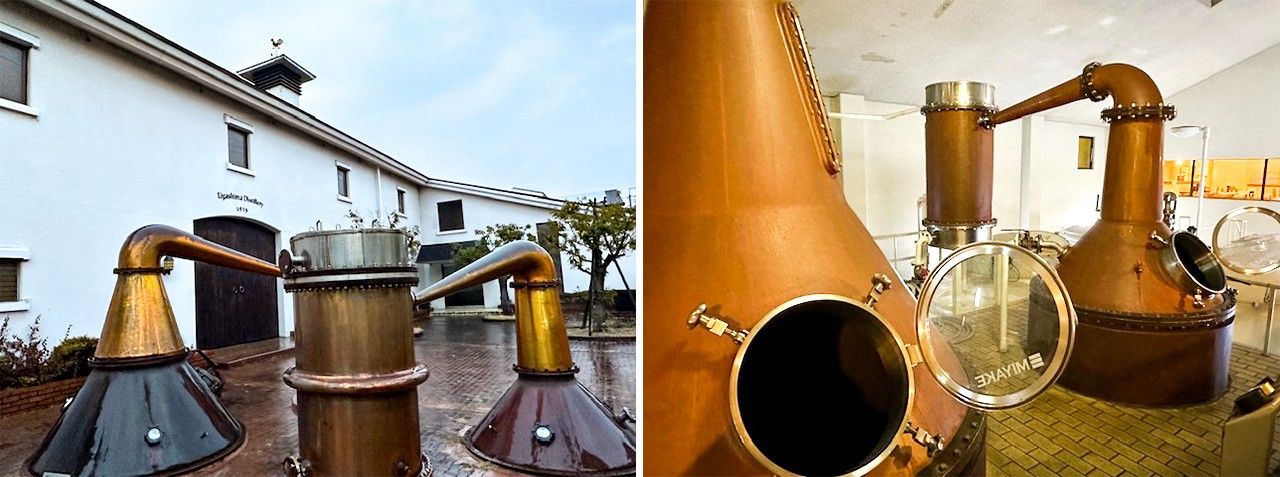
Eigashima Shuzō’s distillery in Akashi, Hyōgo Prefecture, on January 13, 2023. The company obtained a license to produce whisky in 1919. (© Izumi Nobumichi)
The actual distillation of “local craft whisky” in a pot still began in 1961. The distillery is careful to make whisky only with British malt and local groundwater, the same water that is used for brewing its sake. Alongside its Akashi brand, the company has released products such as a 12-year-old single malt, and can be considered a historic craft whisky distillery.
More Whisky for Women
As detailed in Fred Minnick’s 2013 Whiskey Women: The Untold Story of How Women Saved Bourbon, Scotch, and Irish Whiskey, women have been deeply involved in the global history of the drink. The life of Scottish woman Rita Taketsuru, wife of Masataka, who supported her husband in a foreign land is also described in this book. (Rita was the subject of the NHK TV drama series Massan, broadcast from September 2014.)
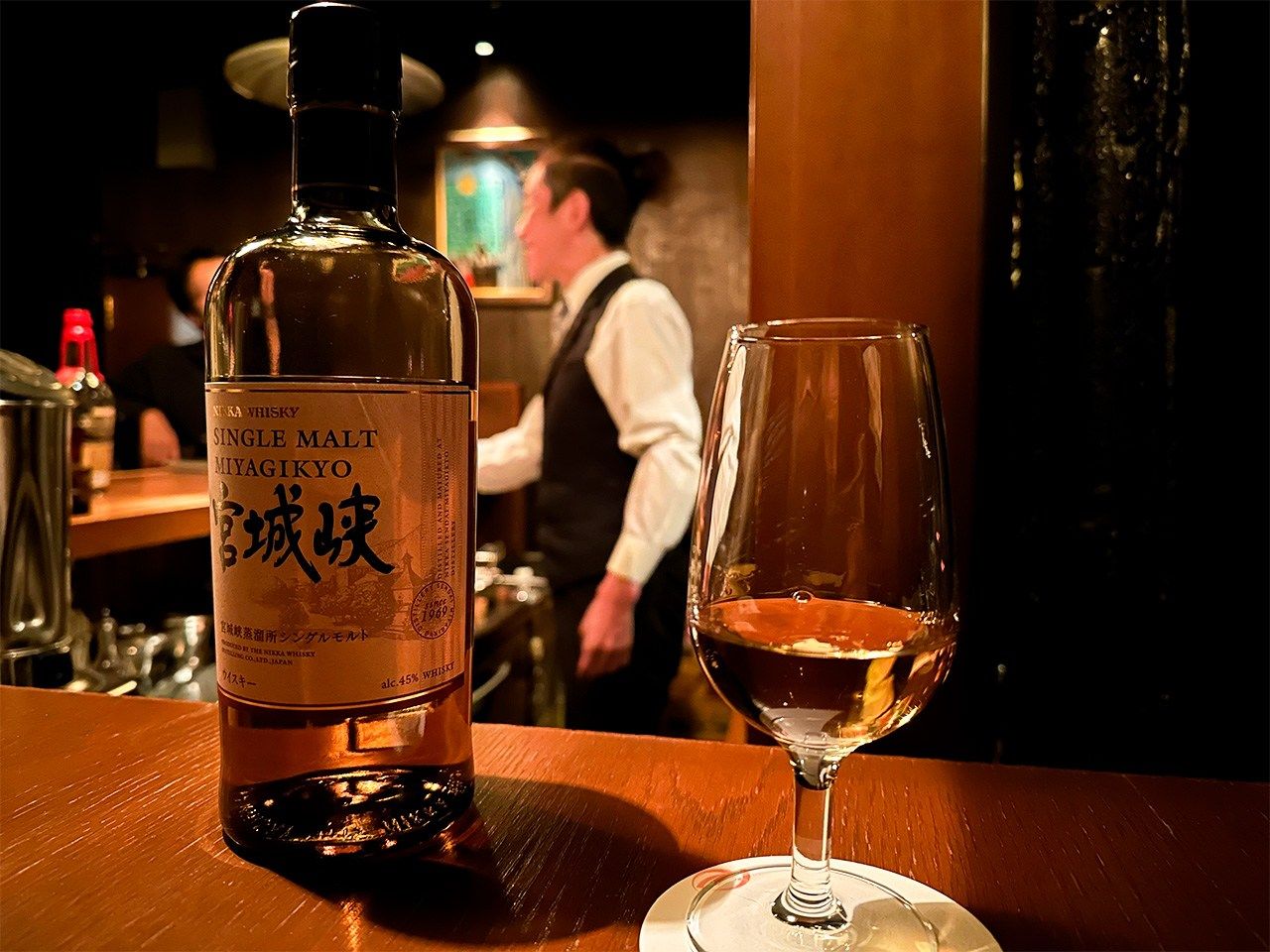
Bar Yū in Ginza, Tokyo, on January 17, 2023. Japanese whisky is popular both at home and overseas. (© Izumi Nobumichi)
Shintani’s book features a list of 122 world whiskies, categorized for complete novice, beginner, intermediate, and advanced whisky drinkers. The major brands have illustrations of their distinctive bottles and people connected with them. It is also packed with useful information such as food that goes well with whisky and different whisky-based cocktails. Good Whisky Time brims with the passionate message that “women, in particular, need more whisky in their lives.”
(Originally published in Japanese. Banner photo: The cover of Guddo uisukī taimu: Manga de wakaru uisukī no hon. Courtesy of Ōizumi Shoten.)
Guddo uisukī taimu: Manga de wakaru uisukī no hon (Good Whisky Time: A Manga Guide to the World of Whisky)
By Shintani Shigeko
Published by Ōizumi Shoten in December 2022
ISBN: 978-4-278-03828-6
